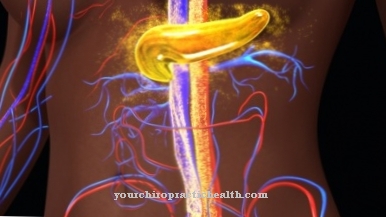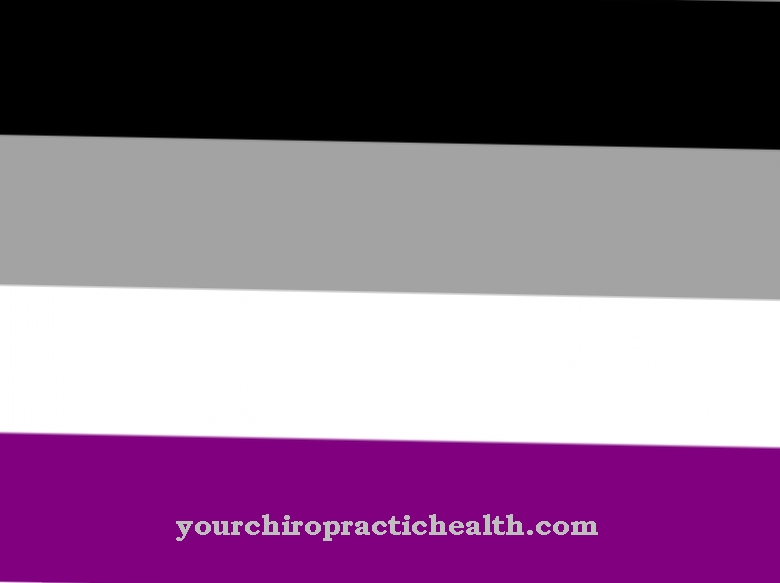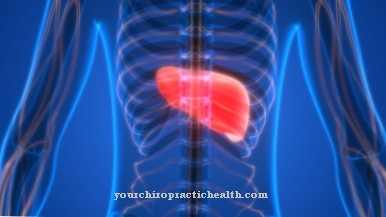The Chest breathing (also Thoracic- or Kostal breathing) is a special form of breathing in which the ribs actively rise and fall. The resulting negative pressure causes the air to flow into the lungs (inspiration) or, due to the elasticity of the lungs and chest, is pressed out of them (expiration).
What is chest breathing?

Chest breathing is a type of external breathing. The exchange of breathing air between an organism and its environment characterizes external respiration, while internal respiration describes processes for energy conversion within the body or in individual cells.
In medicine, chest breathing is also known as thoracic breathing. The term is etymologically derived from the anatomical term thorax, which means the chest. The opposite of chest breathing is abdominal or diaphragmatic breathing, which is predominantly controlled by other muscle groups.
Diaphragmatic breathing makes up about two thirds of human breathing, while chest breathing takes on the remaining third of external breathing. In addition, chest breathing requires more energy than diaphragmatic breathing and is used above all when there is greater physical and psychological stress. For this reason, chest breathing is considered characteristic of stressful states.
Function & task
During inhalation when breathing in the chest, the external intercostal muscles contract (musculus intercostalis externus). It is located above the thorax and runs diagonally across the individual ribs towards the abdomen. The external intercostal muscles originate from one rib and attach to the next rib. Their contraction actively lifts the ribs and turns them lengthways outwards. As a result, the respiratory muscles expand the chest both laterally and in a forward and backward direction: the volume of the lungs increases thanks to the elastic tissue that makes up the lung wall.
This process creates a negative pressure inside the chest: The increased volume of the lungs now has a negative pressure in relation to the surroundings, with the same mass of breathing air it contains. This allows air to flow into both lungs automatically through the open air seal in the throat and through the airways. Medicine also calls this process of inhalation inspiration and accordingly calls the external intercostal muscles an auxiliary inspirer because of their supporting function.
During the reverse process, exhalation or expiration, the air leaves the lungs again. To do this, the chest muscles relax. Due to the lack of tension and the elasticity of the chest and lungs, the ribs then lower and rotate around their longitudinal axis back to their starting position.
Healthy people breathe in the mixed breaths described above during chest breathing. During acute shortness of breath, for example as a result of an asthmatic illness, however, what is known as auxiliary breathing is predominant. The auxiliary breathing muscles are also known as the auxiliary breathing muscles and, under adverse circumstances, participate in the inspiration of chest breathing.
This muscle group includes the internal intercostal muscles (Musculus intercostalis internus), which lie under the external intercostal muscles, and the lower rib muscles (Musculus subcostalis), which are located on the inside of the ribs. The lower rib muscles have their origin near the corners of the ribs and stretch over one rib to attach to the rib after that. Other auxiliary respiratory muscles are the straight abdominal muscle (rectus abdominis muscle) and the external and internal oblique abdominal muscle (external oblique abdominal muscle or internal oblique muscle).
You can find your medication here
➔ Medication for shortness of breath and lung problemsIllnesses & ailments
Since abdominal breathing, in contrast to chest breathing, favors physical and psychological relaxation, chest breathing is considered a less favorable form of breathing. Incorrect posture, bad posture, physical malformations and both acute and chronic lack of exercise can lead to a shift in the ratio of chest and abdominal breathing in favor of chest breathing.
As a result, the risk of stress-related illnesses and infections of the respiratory tract may increase: Due to the shallow breathing, there may only be a partial exchange of air, which can lead to a low absorption of oxygen. Symptoms such as tiredness, mild concentration problems and general malaise may occur as a consequence.
Repeated complaints occur when breathing in the chest, especially in the context of asthmatic attacks. Acute shortness of breath characterizes the seizures that occur as a result of various underlying diseases. A common asthmatic disease is bronchial asthma or bronchial asthma. As the name suggests, the cause is a constriction of the bronchi. Medicine also calls it bronchial obstruction. It can take both fully and partially reversible (reversible) forms.
The cause may be allergic reactions, for example if you are sensitive to animal hair, pollen or house dust. Infections, the use of substances that irritate the respiratory tract, and psychological factors can also be triggers. In these cases, doctors speak of non-allergic asthma.
An asthmatic attack causes acute shortness of breath, which causes the auxiliary breathing described above. The aim of this mechanism is to force more air into the lungs and thus counteract the threat of oxygen deficiency. This could occur as a result of the impaired breathing and, in the worst case, lead to an insufficient supply of the organs.
Over a long period of time, lack of oxygen has the potential to cause cells to die, including nerve cells in the brain. Brain damage is therefore a typical result of prolonged lack of oxygen, even if there are no fatal consequences.








.jpg)



















